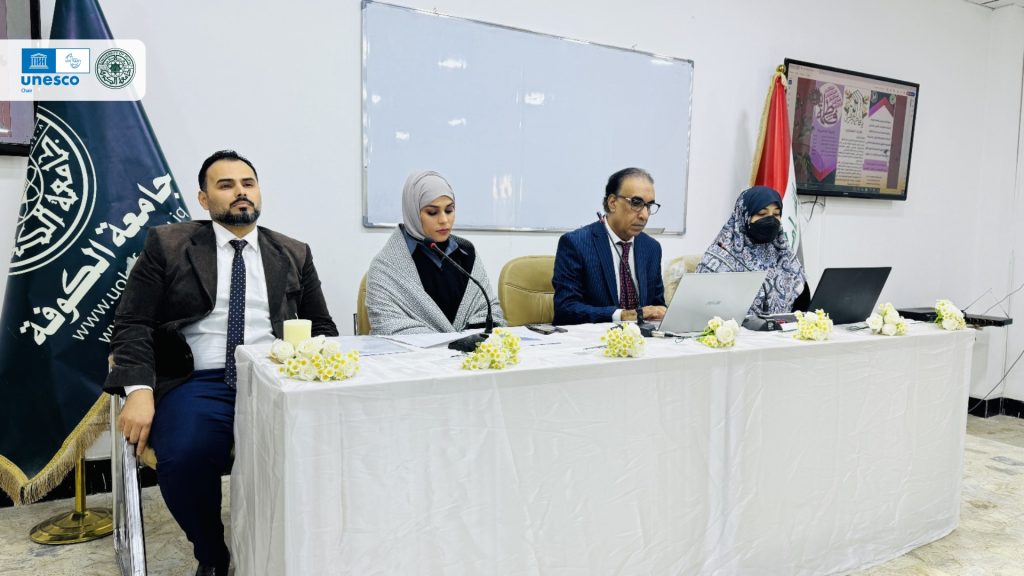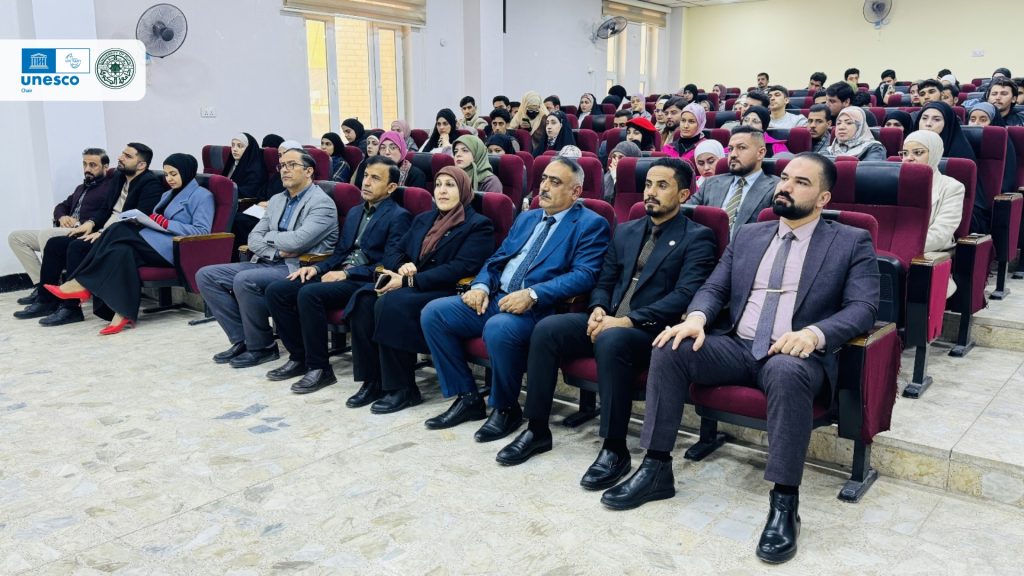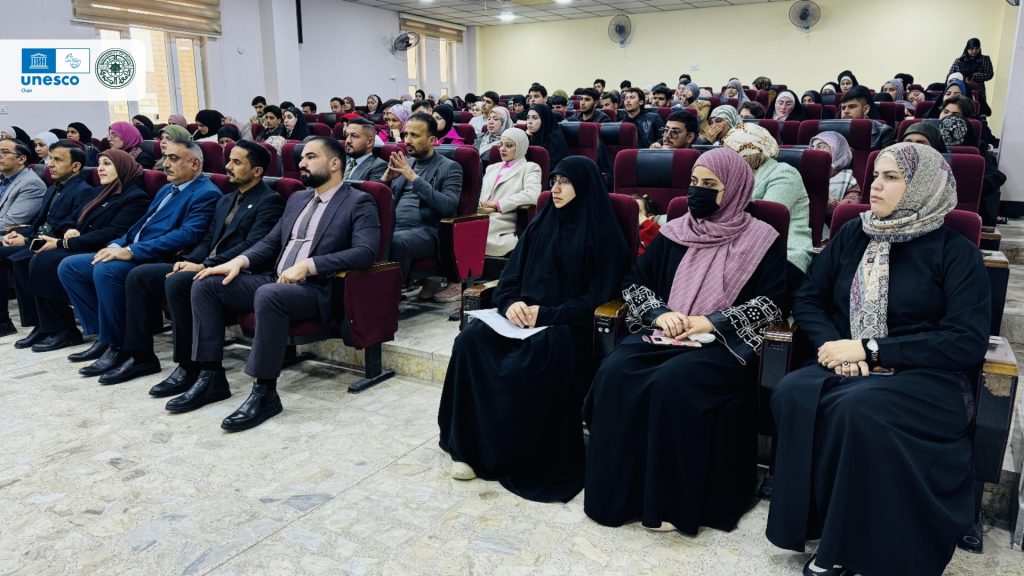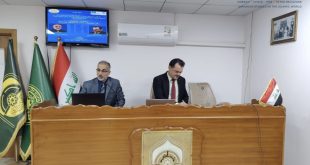On the occasion of the birth anniversary of Lady Fatimah al-Zahra (AS), the UNESCO Chair participated in a seminar organized by the College of Languages under the title “Lady al-Zahra (AS): An Icon of Sanctity in the Cultures of Nations” on Tuesday, December 24, 2024.
Dr. Alaa Shatnan, Director of the UNESCO Chair, delivered a lecture during the seminar entitled “Fatimah al-Zahra (AS) and Her Role in Promoting Interfaith and Sectarian Unity in the Thought of French Orientalist Louis Massignon.”
After introducing the French Orientalist Louis Massignon and his intellectual orientations, Dr. Shatnan explained that Massignon emphasized the central role of Fatimah al-Zahra (AS) in unifying Islamic sects and fostering rapprochement between Islam and Christianity. He highlighted the shared sanctity between the figures of Mary, the Virgin, and Fatimah al-Zahra (AS).
Massignon expressed this view shortly before his death when he entrusted his student, Henri Corbin, with the mission of continuing the study of Lady Fatimah al-Zahra, recognizing the importance of this project as a strong foundation for uniting Shi’a and Sunni Muslims, as well as Christians and Muslims.
Dr. Shatnan also elaborated on the key points of similarity that Massignon identified between Mary, the Virgin, and Fatimah al-Zahra (AS), including:
•Chastity and Purity: Both figures are known for their unparalleled virtue. Lady Fatimah al-Zahra is the daughter of Prophet Muhammad (PBUH), while Mary is the mother of Prophet Jesus (AS), placing them close to prophets in their respective faiths.
•Sanctity and Reverence: Both women hold deep spiritual symbolism and are revered in their traditions.
•Motherhood: Mary gave birth to Prophet Jesus (AS), and Fatimah al-Zahra gave birth to Hasan and Husayn (AS), two central figures in Shi’a Islam.
•Prophecies: Both figures are associated with prophecies highlighting their significant roles in religious history.
Dr. Shatnan concluded his lecture by emphasizing another reason why Massignon viewed Fatimah al-Zahra (AS) as a bridge for interfaith and inter-sectarian dialogue. He noted that from her lineage will come the awaited Mahdi (AS), whom Muslims await as a savior, analogous to the Christian anticipation of the return of Christ.
Translated by Razan Al-Sultany
 UNESCO CHAIR For Inter-Religious Dialogue Studies in The Islamic World
UNESCO CHAIR For Inter-Religious Dialogue Studies in The Islamic World





